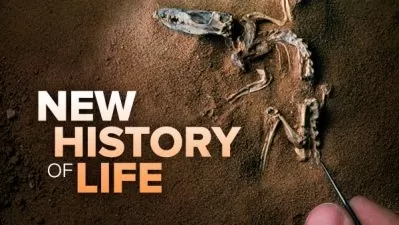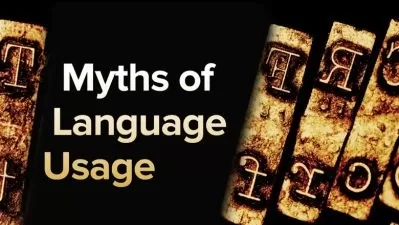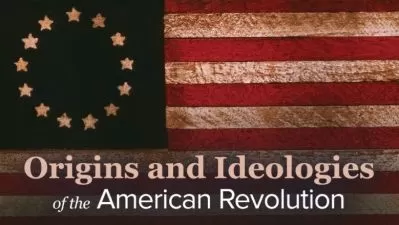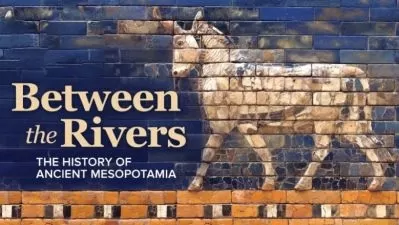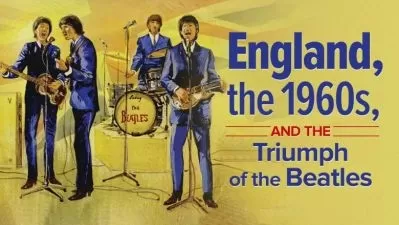Human Prehistory and the First Civilizations
Brian M. Fagan
18:09:45
Description
Where do we come from? How did our ancestors settle this planet? How did the great historic civilizations of the world develop? How does a past so shadowy that it has to be painstakingly reconstructed from fragmentary, largely unwritten records nonetheless make us who and what we are?
This course brings you the answers that scientific and archaeological research and theorizing suggest about human origins, how populations developed, and the ways in which civilizations spread throughout the globe.
It is a narrative of the story of human origins and the many ties that still bind us deeply to the world before writing.
Your professor is Brian M. Fagan, Ph.D., Professor of Anthropology at the University of California at Santa Barbara. Professor Fagan was a Guggenheim Fellow in 1973 and has received numerous awards, among them the Public Service Award of the Society of Professional Archaeologists and the Public Education Award of the Society for American Archaeology. He received a Distinguished Teaching Award from the University of California at Santa Barbara. His excavations have made him a pioneer of multidisciplinary African history.
Dr. Fagan's numerous books include People of the Earth and In the Beginning, two widely used university and college textbooks in archaeology and prehistory. His other works include The Rape of the Nile, The Adventure of Archaeology, Time Detectives, and The Little Ice Age. He also edited The Oxford Companion to Archaeology. Professor Fagan was born and educated in Britain and speaks with a British accent.
AudioFile® magazine writes about Dr. Fagan: "Vibrant and dynamic. It's easy to hear why he has been lauded by faculty and students at The University of California, Santa Barbara, for his teaching and academic excellence since 1967."
What Is "Prehistory"?
Prehistory—meaning human societies without writing or widespread written records—survived until Western culture and industrial society completed their globalization in the 20th century, making the topic of a course that begins with some very old fossils seem more current than you may think.
You learn about dozens of archaeological sites all over the world and learn about stone-tool making, mammoth hunting, and temple building as you explore man's earliest origins and the earliest civilizations.
Themes to Remember: Human Achievement
Woven through this narrative is a set of pervasive themes:
- Emerging human biological and cultural diversity (as well as our remarkable similarities across surprising expanses of time and space)
- The impact of human adaptations to climatic and environmental change
- The importance of seeing prehistory not merely as a chronicle of archaeological sites and artifacts, but of people behaving with the extraordinary intellectual, spiritual, and emotional dynamism that distinguish the human.
This is a world tour of prehistory with profound links to who we are and how we live today.
2.5 Million Years of History
This 36-lecture narrative covers human prehistory from our beginnings more than 2.5 million years ago up to and beyond the advent of the world's first preindustrial civilizations.
Due to the large spans of time and geography covered in this series, these lectures are divided into six sections:
Section I: Beginnings
This section surveys the archaic world of the first humans, you travel into the remote past, learning why the late Harvard biologist Stephen Jay Gould was probably right to observe that we all come from the same African twig on the bushy tree of human evolution.
You examine prehistory from Australopithecus africanus through Homo habilis (the first tool-making hominid), and Homo erectus (whose remains were first found on Java but whose origins lie in Africa) through the hardy Neanderthals who lived and hunted successfully in Europe despite the bitter grip of the last Ice Age 100,000 and more years ago. You focus on the first human settlement of Africa as early as 800,000 years ago.
Section II: Modern Humans
This section tells the story of the great diaspora of anatomically modern humans in the late Ice Age. Whether and how these modern humans spread from the African tropics into southwestern Asia and beyond remains one of the great controversies among scholars of prehistory.
You follow Homo sapiens sapiens north into Europe some 45,000 years ago. You meet the Cro-Magnons, among the first known artists as well as hunter-gatherers, who exhibited degrees of spiritual awareness, social interaction, and fluid intelligence.
You venture into the frigid open plains of the Ukraine and Eurasia, where big-game hunters flourished in spite of nine-month winters. Moving to the Americas, debate over the origins of the first human settlement continues.
Section III: Farmers and Herders
This section describes perhaps the most important development in all human prehistory: the beginnings of agriculture and animal domestication.
This defining chapter began about 12,000 years ago, when hunter-gatherers in the Near East broke from the long human tradition of intensely mobile foraging and turned to more settled ways of life built around cultivating cereal grains or tending animals.
Section IV: Eastern Mediterranean Civilizations
Professor Fagan describes early civilizations in an increasingly complex eastern Mediterranean world, discussing many theories accounting for the appearance of urban civilization and overall attributes of preindustrial civilizations.
You examine Sumerian civilization in Mesopotamia and the intricate patchwork of city-states between the Tigris and Euphrates Rivers. You explore ancient Egypt, the Minoan civilization of Crete, the Mycenaeans, and the Hittites.
You learn about the Uluburun shipwreck of southern Turkey, a sealed capsule of international trade from 3,000 years ago.
Section V: Africans and Asians
You analyze the beginnings of South Asian civilization and the mysterious Harappan civilization of the Indus, which traded with Mesopotamia. Professor Fagan resumes the story of South Asian civilization after the collapse of the Harappan and shows how Mauryan rulers on the Ganges encouraged trading much farther afield.
You see the impact of monsoons which revolutionized maritime trading among Africa, India, and Southeast Asia, and explore Meroe, Aksum, and the coastal civilization of East Africa.
Several lectures cover the beginnings of civilization in China and Southeast Asia.
Section VI: Ancient Americans
Professor Fagan takes you into sophisticated chiefdoms and civilizations that developed in the Americas over the past 3,500 years, including Pueblo cultures of the North American Southwest and the Mississippian culture of the South and Southeast. You learn about Mesoamerican civilization, primordial Olmec culture of the lowlands, and the spectacular ancient Maya civilization.
Moving to the highlands, you visit the city-states of Monte Albán in the Valley of Oaxaca and Teotihuacán near the Valley of Mexico. Professor Fagan also describes the rise of Aztec civilization, followed by a journey to the Andes. Finally, you explore the southern highlands, with the rise of Tiwanaku near Lake Titicaca, the Chimu civilization of the coast, and the huge Inka empire.
The series closes by analyzing the closing centuries of prehistoric times during the European age of discovery and summarizing the main issues and themes of the course:
- What was involved in the archaic world
- The appearance and spread of modern humans
- Food production
- The development of states
More details
User Reviews
Rating
Brian M. Fagan
Instructor's Courses
The Great Courses
View courses The Great Courses- language english
- Training sessions 37
- duration 18:09:45
- Release Date 2023/05/09






